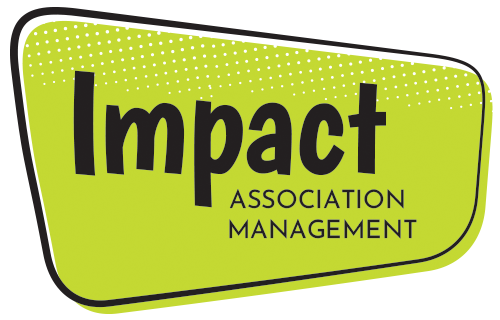By, Alyssa Merkle, Association Manager and Data Specialist at Impact Association Management
What do Netflix, Dominos, and Beyonce have in common? They were all sued for lack of ADA compliance on their web platforms. Under the Americans with Disabilities Act, some organizations risk facing a lawsuit resulting from an inaccessible and discriminatory site platform.
Creating a user-friendly and ADA compliant website not only protects your association from potential legal consequences, but it ensures all of your members can access and gain benefit from the information and resources available on your site.
What does ADA compliance refer to?
ADA stands for the Americans with Disabilities Act, which states that all electronic and information technology must be accessible for people with disabilities.
Who is required to follow ADA requirements?
State and local government agencies
Private employers with 15 or more employees
Businesses that operate for the benefit of the public
What are simple and quick ADA-compliant solutions that I can implement immediately?
Place alt text in all your images to support virtual tools used by people who have a visual impairment. The alt text will describe what the image is to the individual accessing your site.
Link transcripts on your website for any video or audio graphics. Transcripts allow for individuals with a hearing impairment to have better accessibility.
Offer closed captions on videos as an audio alternative for individuals with a hearing impairment.
Disable autoplay for all audio and video. The autoplay function on websites disrupts standard accessibility tools.
Use proper HTML code. Screen readers use HTML code to translate your site's graphics, text, and live links. When unnecessary code is embedded within your site, screen readers are at risk for inefficiencies.
Provide high color contrast used for text and content. High color contrast on text allows individuals with mild visual impairment to view content better.
You can access specific examples here: https://www.ada.gov/pcatoolkit/chap5toolkit.htm.
Are there compliance lists to support ADA compliance?
Yes! The most common resource used to ensure proper accessibility is WCAG. The WCAG lists four standards to fulfill the basic ADA compliance requirements. Your site must be perceivable, operable, understandable, and robust. You can find specific solutions here and here.
Useful Tools:
Check your website's accessibility rating by running it through https://accessibilitytest.org.
You may also participate in a free website audit at https://accessibe.com.
Add a simple widget to your site platform: https://userway.org/widget/.
Improve your site accessibility by using an AI technology widget: https://accessibe.com/accesswidget.
Access a straightforward accessibility checklist at: https://webaim.org/standards/wcag/checklist.

